Questions
Day 1
Scriptural Reflection
Exodus 25:10–22
We shall
continue the study of Exodus, the second book of the Old Testament.
As we shall be reflecting on the
building of the tabernacle and its contents, the following sketch of the layout
of the tabernacle may be helpful:
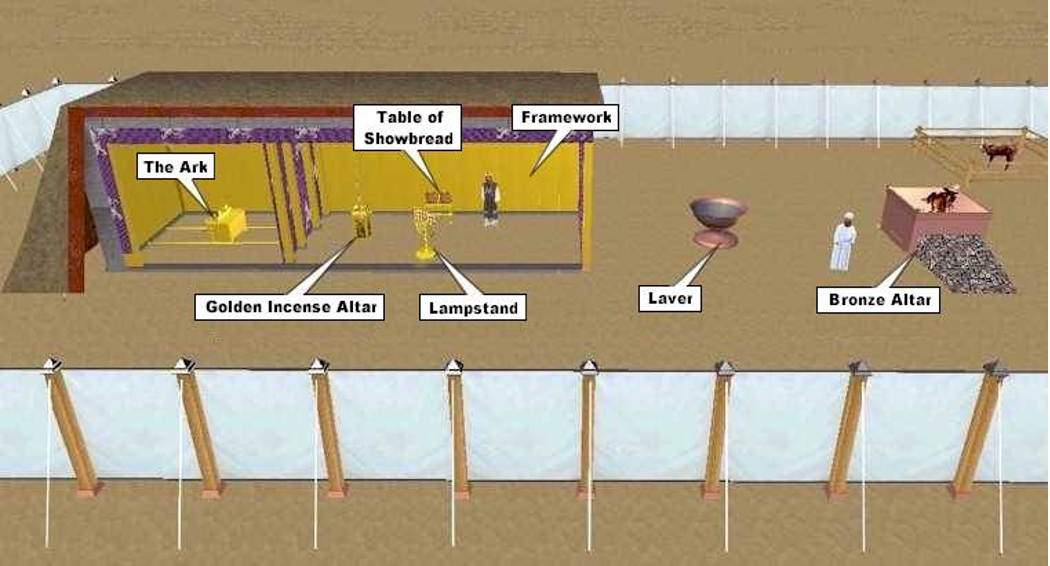
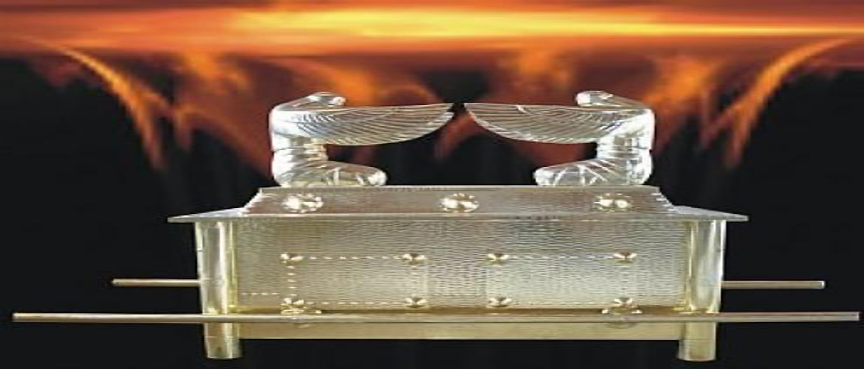
It is perhaps helpful to note that these instructions (concerning the building of the tabernacle) are addressed to Moses directly, and thus in v. 22 when God says, “I will meet with you”, "you" is singular and refers to Moses.
(1) I have selected this rare image of the ark which shows the poles being attached to the lower part of the ark (the feet) which correspond more closely to the instruction in v. 12. However, if you are viewing this image in color, it is not gold. Why does the appearance of the ark have to be in gold?
(2) Why should there be cherubim on top of the cover? Why should they be positioned in such a posture? How much does it reflect the reality of the heavenly worship?
(3) Why is the cover called the Atonement Cover? (See Leviticus 16:15-16.)
(4) Why should the two tablets of the Ten Commandments be put inside the ark?
(5) Contrast the function served by the cherubim at the end of Genesis 3 to their present function. What might be the message that is being conveyed by the ark?
(6) The Israelites have been summoned to Mount Sinai to meet with God and receive the covenant law and they would consider Mount Sinai as the Mountain of God. But with this portable ark, what is God’s message to them and to Moses (see v. 22)?
(7) When we gather our thoughts on all that are being described about the ark, what kind of a throne is being depicted by this ark? What does God expect His people to think of this ark? (See Hebrews 4:16.)
(8) What have you learned today and how may you apply it in your life?
Day 2
Scriptural Reflection
Exodus 25:23–30
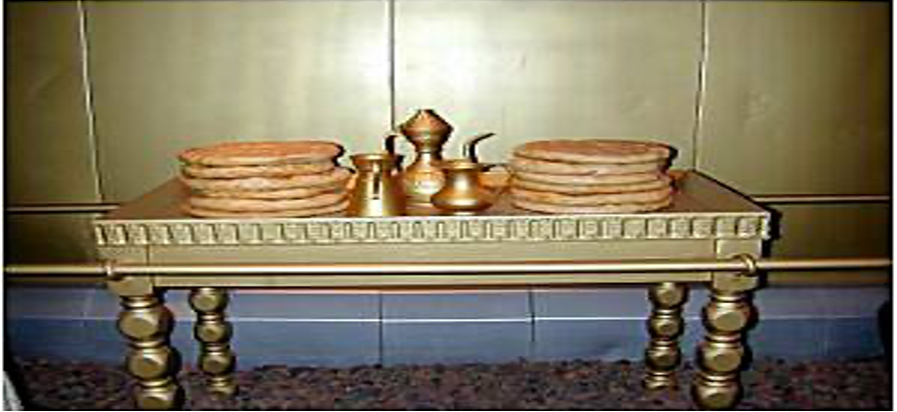
While the “origin and the
exact significance of this Presence-Bread are not clear” (Durham, 362),
let’s reflect based on what is being written and it is helpful to
consult Leviticus 24:5-9 where the function of the bread and the incense
is explained (also see Note below):
(1) The word for
“Presence” is literally “face” (Alter, 463). So what
does the “Bread of (God’s) face” mean to the people?
(2) Presumably, this special bread was placed on the table every Sabbath along with the incense which is burned to the Lord (to represent the bread according to Lev. 24:7). Although the bread from the previous week would be eaten by the priests (and the priests only—see 1 Sam. 21:4-6 and Matt. 12:4), how does the use of the Bread of Presence signify “as a lasting covenant” by the Lord (see Lev. 24:8)?
(3) What does eating normally represent in the Oriental culture?
So as God accepts the bread (symbolized by the burning of the incense) and the priests eat of the same bread a week later, what does this signify and what is the “lasting covenant” being affirmed by this weekly ritual?
(4) If the 12 loaves
of bread symbolize the eternal fellowship of God with His people, such a covenant
is still perpetuated within the most holy setting. Note the following:
a. The ritual takes place “in a holy place” as “a most holy part of their regular share of the offerings made to the Lord” (Lev. 24:9).
b. The entire table is made not only of gold, but designed in such a way that any direct human contact or handling is avoided.
How should this balance between the maintenance of holiness and fellowship speak to our communion with God today?
(5) What have you learned today and how may you apply it in your life?
Note:
The table has four kinds of containers on it:
1. A plate on which the Bread of Presence was placed
2. A small pan for incense
3. A pitcher for the wine of libation
4. A bowl into which the libation was poured
Day 3
Scriptural Reflection
Exodus 25:31–40
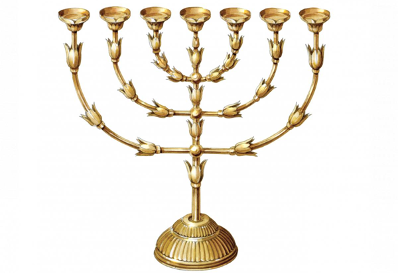
(1) As
you read about the design of the lampstand, consider these questions:
a. What catches your attention or imagination?
b. What questions does it evoke in you?
(2) On a practical level, the Holy Place needs light for the attending priests to serve before the Lord on behalf of the people and the lampstand serves this purpose. But its spiritual implication is also unmistakable. Apart from the symbol for gold, what other symbols can you think of that are represented by this golden lampstand?
(3) While within the Pentateuch, there is no immediate spiritual significance attached to it, God does reveal to Zechariah its spiritual significance (or at least one of its spiritual significances) in Zechariah 4:1-14. What is it?
(4) The Lord Jesus also uses golden lampstands as an analogy in Revelation 1:20. What do those lampstands stand for? How may we, as a result, understand the spiritual function of this golden lampstand within the tabernacle?
(5) Commentators, in general, consider the use of the almond-shape because of “the fact that it is the earliest of all the trees in both its blossom and its fruits” (K&D, 435) (Jer. 1:11, 12). If this is the case, what then is the significance of shaping the lampstand after the shape of an almond tree?
(6) What is the significance of the reiteration in v. 40?
(7) What have you learned today and how may you apply it in your life?
Day 4
Scriptural Reflection
Exodus 26:1–37
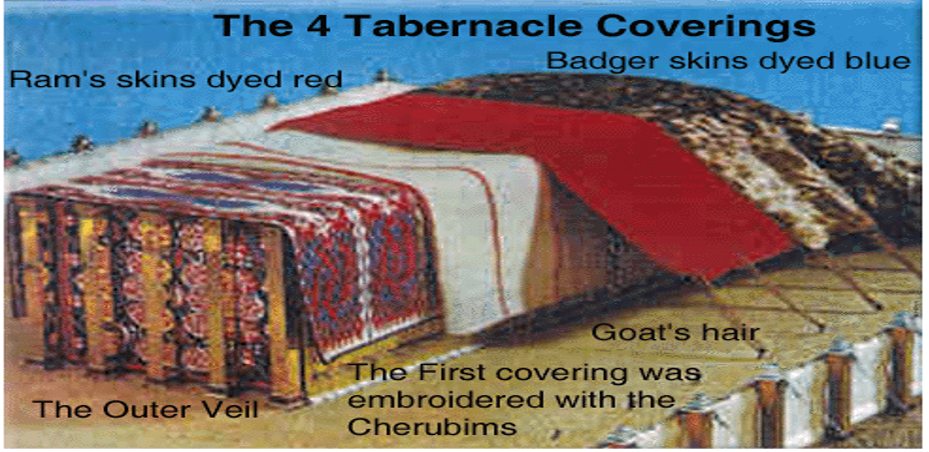
This is a long chapter that could be rather mundane, but I would suggest that you still read it slowly with the following divisions and highlights as a guide. Perhaps, pay attention to the kind of materials and colors, and try to understand their meaning:
Vv. 1-6: The tabernacle is made up of 10 curtains of expensive fabric and yarn of two sets of five curtains each, joined by loops to stretch about 60 feet in length and 42 feet in height. Note that cherubim are embroidered on them.
Vv. 7-14: To protect the expensive curtains, an additional set of curtains and two covers are to be made. The curtains are made of goat skins with hair intact, stretching about 66 feet in length and 45 feet in height, enough to cover the tabernacle proper, including its front and back. In addition to these two layers, another cover of rams’ hide, plus another cover of sea-cow’s hides are to be made, making the tabernacle a tent of four layers.
Vv.15-30: These curtains are to be held by upright supports anchored in pedestals of silver and bound together by a series of cross-members and two special corner supports.
Vv. 31-35: The tabernacle is to be further divided into a smaller Holy of Holies (of 15’ x 15’ x 15’) where the ark will be located. It is separated from the Holy Place (of dimensions 30’ x 15’ x 15’) by a veil with fine fabric with the cherubim embroidered on it.
Vv. 36-37: The open east end of the tabernacle is to be closed by a screen made of the same materials as the inner curtains and the veil.
(1) Did you notice a gradual change in the type of materials in the design of the tabernacle from more to less precious materials the greater the distance from the Holy of Holies and the Holy Place? Why is it the case?
(2) Apart from the two cherubim on top of the Ark cover, more are to be embroidered on the innermost layer of the curtains. What does this portray?
(3) It is believed that the design of the support system emphasizes its portability, meaning that the tabernacle depicts a Presence on the move. Some commentators think that it points to the temporariness of God’s presence, while some think that it is a sign of His constant presence wherever His people move. Which do you think is the case? Why?
(4) Read vv. 31-34 again about the erection of the veil separating the Holy of Holies from the Holy Place. Then read Mark 15:38. Imagine you were the priest who was on duty in the Holy Place witnessing the splitting of the veil. What impact might it have on you and others who rushed in to see what had happened?
(5) What have you learned today and how may you apply it in your life?
Day 5
Scriptural Reflection
Exodus 27:1–8; 20–21
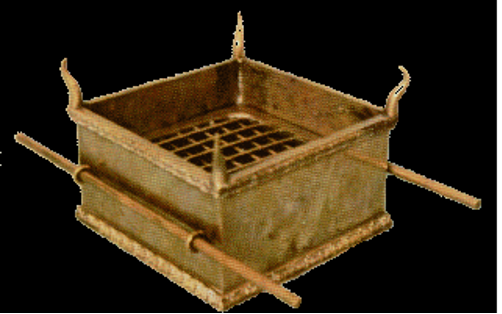
Vv. 1-8: The Altar
This is, perhaps, the most-often used furniture in the tabernacle in that sacrifices would be made daily by the priests on behalf of the people. In actual fact, without the altar, there is no access to the Presence of the Lord at all. And in the process of sacrifice, the blood of the sin-offering is to be smeared upon it (Lev. 4:7). This ritual constantly reminds the people of their sins and their need for atonement through the blood of animals.
(1) As pagan worship often took the form of sacrifice of animals on their altars as well, how should the Israelites distinguish themselves and their worship from the pagans?
(2) Look up Exodus 21:14 and I Kings 1:50-53. Do you get a sense of how the Israelites looked upon the altar?
(3) Upon their return from the exile after the destruction of the temple by the Babylonians, the first thing the Israelites did was to rebuild their altar (Ezra.3:2-6). Why was that?
(4) Ever since AD. 70, there is basically no prescribed altar to make their sacrifice. What should be the message to the Jews today?
(5) Apart from the need to come before God with the blood of sacrifice, what other meanings does the offering of sacrifice entail?
(6) Now as Christians, we do not need to perform the rites of sacrifice because Jesus, the Lamb of God has made the ultimate, once-for-all sacrifice for our sins. How then should we live out the ultimate meaning of worship through sacrifice to God? (See Rom. 12:1-2.)
Vv. 20-21: Oil for the Lampstand
The instruction to use clear oil (not pressed) is to ensure the least amount of smoke generated from the light, and apparently the task of keeping the lamps burning from evening until morning was the responsibility of the priest on the evening shift. Psalm 134:1 has this to say to the night-shift priest: “Praise the Lord, all you servants of the Lord who minister by night in the house of the Lord.”
(7) Why does the psalmist make special mention of them, who presumably have far less to do except to keep the lampstand glowing, and are far less visible to the public?
(8) What might be the lesson for you today?
Day 6
Scriptural Reflection
Exodus 27:9–19
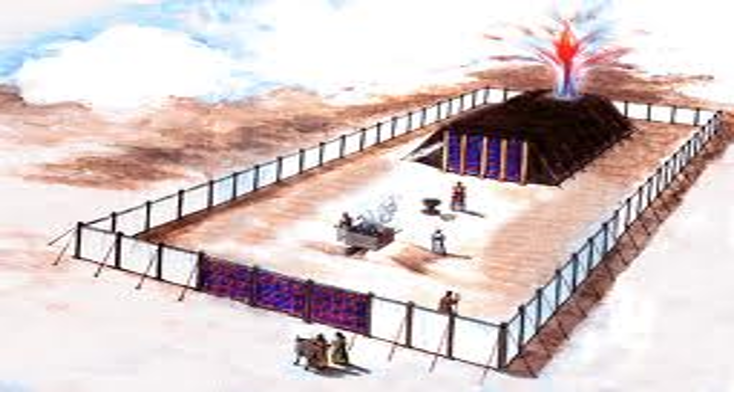
(1) The perimeter of the courtyard serves the function of separating this place of worship from the outside world. One enters into the courtyard for one purpose only and that is to draw near to God and to worship Him. How should this remind us of our attitude in attending our Sunday worship?
At this time, it is, perhaps, fitting for us to recollect and reflect on what we have read so far about the tabernacle:
(2) 25:1-9: God reveals His desire to “tabernacle” with His people beyond Mount Sinai.—How different is our God from all the gods of the pagans in this respect?
(3) 25:10-22: God shall reveal His presence and meet with Moses between the cherubim above the cover over the ark of the Testimony.—How does it reflect both God’s holiness and mercy?
(4) 25:23-30: A Table of Presence (face) shall be made with the Bread of Presence perpetually offered and maintained—How does this deepen our understanding of what Jesus, the Bread of Life, says of Himself, “I tell you the truth, unless you eat the flesh of the Son of Man and drink His blood, you have no life in you.” (Jn. 6:53)
(5) 25:31-40: A golden lampstand is to be made of pure gold to light up the Holy Place (27:20-21 mandates the use of clear oil and ensures its perpetual burning).—In what way should we become like Jesus, the light of this world, resembling the purity and brightness of the golden lampstand?
(6) 26:1-37 specifies the four-layered curtains and the separation of the Holy of Holies from the Holy Place.—Such a separation is no longer needed, as the barrier between the Most Holy God and sinners has once-for-all been torn down. Do you think the design of some churches or cathedrals which take after the pattern of the tabernacle, separating into three sections, is meaningful or biblical?
(7) 27:1-8 gives instruction for the building of the all-important altar without which there is no access to God.—How then shall we live as “living sacrifices” to God? (Rom. 12:1-2)
(8) 27:9-19: The building of the courtyard to separate the place of worship from the outside world.—What is the “real” world?—Is it within the courtyard or outside the courtyard?
(9) What is the main message for you today and how may you apply it in your life?
Day 7
Scriptural Reflection
Exodus 28:1–9
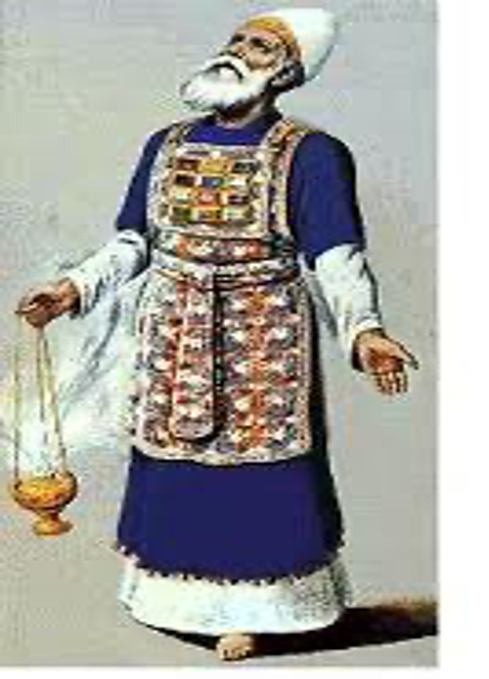
(1) What is the purpose of having to make special garments for the priest?
(2) What do the garments have to do with the priest’s consecration?
(3) What is the role of a priest?
(4) In the case of Aaron and his sons, their role is that of a high priest, and with that comes the sacred garments that include an ephod (perhaps like a vest), a breastpiece, a robe, a tunic, a turban and a sash. It is specified here that the skilled workers are to “use gold, and blue, purple and scarlet yarn, and fine linen.” What do the garments have in common with the materials of the tabernacle? What might the reason be?
(5) On the shoulder of the priest, two onyx stones are to be engraved with the names of the sons of Israel:
a. What is the purpose of having these names to be borne on their shoulders?
b. What is meant by “as a memorial before the Lord”?
c. Why should the names be engraved on precious stones?
(6) What is the main message for you today and how may you apply it in your life?